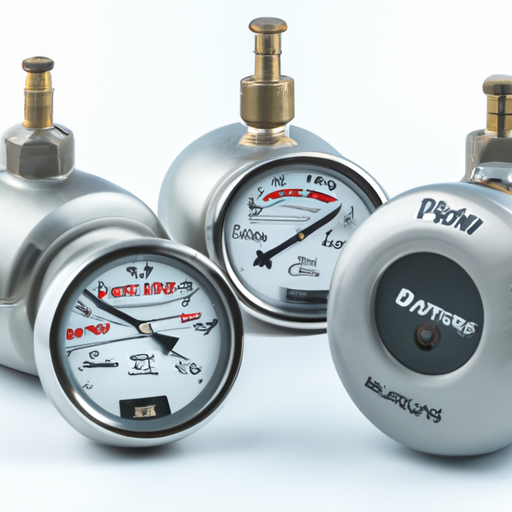

A pressure sensor is a device that measures the pressure of a gas or liquid and converts it into an electrical signal. These sensors are used in a wide range of applications, from monitoring the pressure in industrial processes to measuring blood pressure in medical devices.

1. Piezoresistive sensors: These sensors use a piezoresistive material, such as silicon, to measure pressure. When pressure is applied to the material, its resistance changes, which can be measured and converted into a pressure reading.
2. Capacitive sensors: Capacitive sensors use a diaphragm that deforms in response to pressure, changing the capacitance of the sensor. This change in capacitance is then converted into a pressure reading.
3. Piezoelectric sensors: Piezoelectric sensors generate an electrical charge in response to pressure, which can be measured and converted into a pressure reading. These sensors are often used in high-pressure applications.
4. Optical sensors: Optical sensors use light to measure pressure. When pressure is applied to the sensor, it changes the way light is transmitted through the sensor, which can be measured and converted into a pressure reading.
Pressure sensors are used in a wide range of industries and applications. In the automotive industry, they are used to monitor tire pressure and engine performance. In the medical field, they are used to measure blood pressure and monitor patients during surgery. In the aerospace industry, they are used to monitor cabin pressure and fuel levels.
One of the key advantages of pressure sensors is their ability to provide real-time data on pressure levels, allowing for quick adjustments to be made if necessary. This can help prevent equipment failures, improve efficiency, and ensure the safety of workers and equipment.
In conclusion, pressure sensors are an essential component of many modern devices and systems. They play a crucial role in monitoring and controlling pressure levels in a wide range of applications, from industrial processes to medical devices. With their ability to provide accurate and real-time data, pressure sensors help ensure the safety and efficiency of various processes and systems.
A pressure sensor is a device that measures the pressure of a gas or liquid and converts it into an electrical signal. These sensors are used in a wide range of applications, from monitoring the pressure in industrial processes to measuring blood pressure in medical devices.

1. Piezoresistive sensors: These sensors use a piezoresistive material, such as silicon, to measure pressure. When pressure is applied to the material, its resistance changes, which can be measured and converted into a pressure reading.
2. Capacitive sensors: Capacitive sensors use a diaphragm that deforms in response to pressure, changing the capacitance of the sensor. This change in capacitance is then converted into a pressure reading.
3. Piezoelectric sensors: Piezoelectric sensors generate an electrical charge in response to pressure, which can be measured and converted into a pressure reading. These sensors are often used in high-pressure applications.
4. Optical sensors: Optical sensors use light to measure pressure. When pressure is applied to the sensor, it changes the way light is transmitted through the sensor, which can be measured and converted into a pressure reading.
Pressure sensors are used in a wide range of industries and applications. In the automotive industry, they are used to monitor tire pressure and engine performance. In the medical field, they are used to measure blood pressure and monitor patients during surgery. In the aerospace industry, they are used to monitor cabin pressure and fuel levels.
One of the key advantages of pressure sensors is their ability to provide real-time data on pressure levels, allowing for quick adjustments to be made if necessary. This can help prevent equipment failures, improve efficiency, and ensure the safety of workers and equipment.
In conclusion, pressure sensors are an essential component of many modern devices and systems. They play a crucial role in monitoring and controlling pressure levels in a wide range of applications, from industrial processes to medical devices. With their ability to provide accurate and real-time data, pressure sensors help ensure the safety and efficiency of various processes and systems.